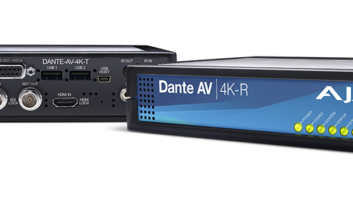
Jason Fitzgerald, Gefen product manager at Core Brands, says utilising video over IP can allow products to take on various roles and change how AV solutions are integrated.
It’s no secret that the worlds of AV and IT have converged in the past five years. Our everyday reliance on networking has led to a revolution in the AV industry. At this moment, network infrastructures are working behind the scenes, providing better avenues for communication and serving as the conduit for much of the in-home media we consume. Traditional distribution, previously run over separate and external mediums, can now utilise these networks for video transmission and control extension in AV. This means that the data paths for the application of video and control over IP are, in most cases, already available and waiting to be tapped.
By utilising video over IP, we are opening the door for products that can wear multiple hats, take on various roles and change the landscape of how we integrate AV solutions. In particular, matrixes can gain significant video and control signal advantages over their I/O-restricted, hardware-driven brethren. By decentralising the I/Os and allowing switches to manage the data traffic, we are enabling scalability. In turn, scalability offers a new and unprecedented level of customisation that gives integrators the option to expand any matrix system in the future without replacing major system components. Though new in application, we’re already beginning to see the benefits of tapping into this new high-speed network infrastructure in the field.
Richer collaboration
Video over IP is already being utilised in the corporate market. I recently visited the headquarters of an innovative, fast-paced company where there was a major push from management for collaboration on a smaller and more intimate scale. Instead of congregating in conference rooms for meetings, employees were encouraged to engage with each other at their workstations and share their progress in a more organic fashion. To make that a reality, the company fully integrated employee’s workstation into a video-over-IP network.
By integrating each workstation into the video-over-IP network with a control layer, employees can walk to the desk of a fellow team member and share their progress on a workstation with the simple wave of an ID tag over a sensor. This signals the control system to immediately switch the current video and control interfaces to reflect the identified user’s hardware, regardless of its location within the building. They are now able to share their progress on their colleagues’ screens. Video over IP significantly changed this company’s culture and, based on the cutting-edge nature of the product, an integrator could easily add new workstations to the network with additional inputs and outputs as the company grows.
Education interaction
We are also seeing a ramp-up of video-over-IP utilisation in the education market. In the higher education segment, the interaction between professors and their students is integral to the learning experience. Video over IP can enhance this interaction through an asset sharing system similar to that of the corporate application I previously described. With a properly deployed video-over-IP solution, student- and institution-provided computing solutions can easily be connected in an ad-hoc manner. Thus, educators will be able to assess each student’s progress, and share this with other students as needed. The real-time interactivity has the capability to create an organically interactive learning environment with a hands-on approach.
The versatility of a scalable solution goes beyond just the student-to-professor interaction; in every school, exacting needs can be deployed in each classroom. For example, institutional video equipment can be shared between departments with implemented centralised management. Campus-wide signage, typically networked, can be leveraged with video-over-IP equipment to share messaging without the reliance on locally based players.
Video and control distribution that takes advantage of current high-speed network infrastructures is rapidly becoming a growing segment in our industry. It enables scalability, versatility and high definition content in a way that wasn’t possible before. As Gefen moves forward with this technology, integrating 4K and employing better compression methods, it will be clear that the first early adopters of this synergistic fusion of IT and AV will certainly gain a significant competitive advantage in the AV industry.







